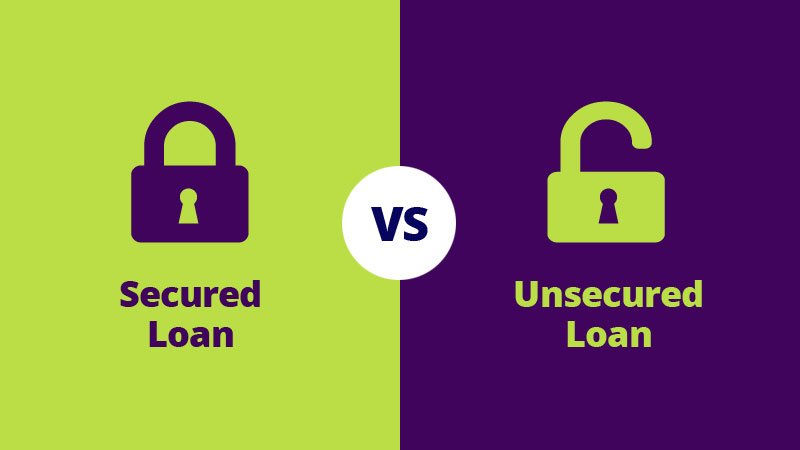Understanding Moving Loans
Moving loans are financial products specifically designed to assist individuals in covering the various costs associated with relocating. These costs often encompass moving services, transportation of belongings, and the expenses incurred during the transition period, such as deposits for utility setups or rental properties. In essence, a moving loan helps to alleviate the financial burden that comes with leaving one residence and settling into another.
There are several types of moving loans available in the market, tailored to meet different needs. Personal loans are one of the most common types of loans for moving purposes, where borrowers receive a lump sum amount that can be repaid in fixed installments over a specified period. Additionally, there are unsecured loans, which do not require collateral, making them a viable choice for individuals with limited assets or those with bad credit. Some financial institutions also offer specialized relocation loans, which are specifically aimed at covering moving-related expenses. Understanding these options is crucial for securing the best moving loan with bad credit.
For individuals with poor credit histories, obtaining financing can be particularly challenging. However, the significance of moving loans in such scenarios cannot be overstated. Relocating often involves pressing deadlines and significant upfront costs, making it essential to have access to funds during the transition. For those struggling with bad credit, finding the right moving loan can ensure that they do not face additional stress during what is already a hectic time. By selecting the best moving loan with bad credit, borrowers can facilitate a smoother relocation process, helping to restore their financial situation while achieving their goal of starting anew in a different location.
Assessing Your Credit Situation
Before applying for a moving loan, especially if you have bad credit, it is essential to conduct a thorough assessment of your credit situation. This initial step will provide you with a clearer understanding of your financial standing and what options may be available for obtaining the best moving loan with bad credit.
The first course of action is to check your credit score, which typically ranges from 300 to 850. A score below 580 is generally considered bad credit. Various credit reporting agencies offer free access to your score and accompanying reports, allowing you to gauge your current creditworthiness. Understanding your score can help you identify the types of loans and interest rates you may qualify for, enabling you to better prepare for the application process.
Next, it is crucial to review your credit reports for inaccuracies. Often, errors can negatively impact your credit score without your knowledge. Obtain a copy of your credit report from all three major credit bureaus—Experian, TransUnion, and Equifax—and examine the details closely. If you identify any discrepancies, promptly file disputes with the respective bureau to correct them. This proactive approach could lead to a slight improvement in your credit standing, which can be instrumental in securing a better deal on a moving loan.
Additionally, understanding the factors contributing to your bad credit is vital. Delinquencies, high credit utilization, and a limited credit history may all be influencing your score. By identifying these issues, you can focus on addressing them, whether through paying down balances, settling outstanding debts, or establishing new lines of credit responsibly. Such measures will ultimately enhance your chances of obtaining favorable terms for the best moving loan with bad credit.
Researching Lenders with Flexible Conditions
Securing the best moving loan with bad credit begins with thorough research into different lenders and their specific conditions. Not all financial institutions provide equal opportunities, especially for individuals with poor credit histories. Consequently, identifying lenders that specialize in bad credit loans is crucial. These lenders are typically more understanding of various financial situations and are inclined to offer more accommodative terms.
To initiate this process, potential borrowers should compile a list of lenders that explicitly advertise bad credit lending programs. Online platforms, financial institutions, and specialized lending websites often provide insights into lenders who are willing to work with individuals in this category. Choosing lenders that offer tailored solutions can increase the likelihood of securing funding, as they often have more flexible criteria regarding credit scores and income verification.
Once a list of potential lenders has been established, it is essential to perform a careful review of their loan terms and interest rates. Each lender may present varying rates, fees, and repayment conditions, which can significantly impact the overall cost of the loan. Prospective borrowers should compare these aspects not only for affordability but also for alignment with their financial goals. Analyzing the Annual Percentage Rate (APR) and other associated fees will provide a clearer picture of the total amount to be repaid.
Furthermore, potential borrowers should take advantage of comparison tools available online. These resources can assist in evaluating different loan offers side by side, allowing for better-informed decisions. Reading customer reviews and ratings can also offer valuable insights into the lender’s reputation, customer service, and efficiency in processing loans for applicants with bad credit.
In conclusion, dedicating time to research and compare lenders is imperative in order to obtain the best moving loan with bad credit. Thorough evaluations of terms and conditions will not only improve the chances of loan approval but also help in finding the most favorable loan arrangement for one’s unique financial circumstances.
Gathering Required Documentation
When applying for the best moving loan with bad credit, it is crucial to gather the necessary documentation to support your application. Lenders often require proof of income to assess your financial stability and ability to repay the loan. This typically involves providing recent pay stubs, W-2 forms, or tax returns. If you are self-employed, include profit and loss statements along with bank statements that reflect your business earnings. Having a consistent income stream can significantly enhance your chances of securing favorable loan terms.
In addition to income verification, proof of residence is essential. This document may include a utility bill, lease agreement, or any official correspondence that displays your name and current address. Providing this information helps the lender confirm your stability and ties to the community. Some lenders may also evaluate the length of your residence, as a longer duration often indicates stability, which is an important factor when applying for a loan with bad credit.
Moreover, you may be required to submit additional supporting documentation. This can include identification documents such as a driver’s license or passport and social security numbers. If you have any loans or debts, it may be beneficial to provide documentation that outlines your repayment history. Listing current debts alongside a plan for repayment can improve credibility and demonstrate financial responsibility, which is especially vital when seeking the best moving loan with bad credit.
Overall, thoroughly organizing and submitting all required documents not only streamlines the application process but also significantly enhances your chances of obtaining the best loan possible, despite a less than ideal credit score.
Improving Your Creditworthiness
For individuals seeking the best moving loan with bad credit, improving one’s creditworthiness is essential prior to application. A strong credit profile can increase the chances of approval and potentially lead to better loan terms. Here are several actionable strategies to enhance your creditworthiness effectively.
First and foremost, consider paying off existing debts. Reducing outstanding balances is one of the most impactful ways to improve your credit score. Experts recommend focusing on high-interest debts first, such as credit cards, as they not only have a higher financial burden but also tend to negatively affect your credit utilization ratio. By consistently lowering your debts, you signal to lenders that you are managing your finances responsibly.
Alongside debt repayment, reducing credit card balances is crucial. The credit utilization ratio, which is the amount of available credit being used, plays a significant role in determining credit scores. Aim to keep this ratio below 30%. If possible, pay more than the minimum payment each month; doing so can help expedite the reduction of your credit card balances, contributing positively to your credit profile.
Additionally, consider requesting credit limit increases on any existing credit cards. If approved, this tactic can further lower your credit utilization ratio without any extra spending. However, it is essential to avoid accumulating more debt in the process.
Another useful strategy is to check your credit report for errors. Mistakes in your credit file can significantly impact your score, making it vital to dispute any inaccuracies. Furthermore, paying bills on time and maintaining a diverse credit mix can improve your creditworthiness over time. By implementing these techniques, you can enhance your credit profile and increase your chances of obtaining the best moving loan with bad credit.
Exploring Co-signer Options
When seeking to obtain the best moving loan with bad credit, exploring co-signer options can be a pivotal strategy. A co-signer, typically a friend or family member with better credit history, can bolster your chances of securing favorable loan terms. Their creditworthiness provides assurance to lenders, reducing perceived risk and potentially leading to lower interest rates or improved repayment conditions. This additional layer of security can be crucial for those who may struggle to qualify for loans on their own due to credit issues.
However, it is essential to approach the idea of having a co-signer with caution. It is important to remember that co-signing a loan commits the co-signer to the same financial responsibilities as the primary borrower. If the primary borrower defaults on the loan, the co-signer becomes liable for the debt. This relationship can strain personal connections, especially if financial difficulties arise. Therefore, open and honest communication regarding repayment plans and financial circumstances is vital before entering into this agreement.
Finding a reliable co-signer requires careful consideration. Ideally, the individual should have a strong credit score and a history of managing debt responsibly. Approach potential co-signers with transparency about your financial situation, including your desire to obtain the best moving loan with bad credit and the reasons for needing their support. Discuss how you plan to ensure timely payments and maintain communication throughout the loan term. Establishing a mutual understanding can alleviate some concerns while reinforcing the co-signer’s confidence in assisting you.
In conclusion, involving a co-signer can significantly enhance your opportunity to secure a loan, even in the context of poor credit history. By selecting a trustworthy individual and maintaining clear communication, you can work toward successfully obtaining the financial support needed for your move.
Considering Alternative Financing Options
When individuals face the challenge of needing to move but have bad credit, exploring alternative financing options becomes essential. Traditional lenders may not be inclined to extend loans to those with poor credit scores, making it crucial to investigate other sources of funding that may better accommodate individual financial situations.
One viable option for those seeking the best moving loan with bad credit is peer-to-peer lending. This method connects borrowers directly with individuals willing to lend money, often cutting out banks and financial institutions. Peer-to-peer platforms assess the borrower’s repayment ability rather than solely relying on credit scores, which can provide avenues for those who have struggled with creditworthiness in the past. Additionally, interest rates can be more favorable compared to traditional loans, depending on the lender’s individual assessment of risk.
Personal loans offered by credit unions represent another alternative worth considering. These nonprofit financial institutions typically have more lenient lending standards and may offer personalized service to assess each member’s unique situation. Credit unions may also provide lower interest rates than conventional banks, making them a compelling option for individuals with bad credit. Joining a local credit union, especially one that understands the community’s needs, might yield significant benefits for those looking for financial support during a move.
Lastly, home equity loans can serve as an effective strategy for financing relocation costs. Homeowners with equity in their properties may leverage that value to secure a loan. Despite the potential risks involved, such as the possibility of foreclosure, this option can provide substantial funds to cover moving expenses, especially for those who may otherwise struggle to find financing due to credit issues.
Understanding Loan Terms and Conditions
When seeking the best moving loan with bad credit, it is crucial to understand the various terms and conditions associated with such financial agreements. A comprehensive awareness of these elements can significantly influence a borrower’s financial stability and ability to repay the loan. The first aspect to consider is the interest rate. This is the cost of borrowing money, typically expressed as an annual percentage rate (APR). With bad credit, borrowers may be subjected to higher interest rates, which can amplify the overall cost of the loan. Therefore, it is imperative to compare rates among different lenders to ensure a competitive deal.
In addition to interest rates, repayment schedules are another vital component of loan agreements. These schedules outline the frequency and amount of payments the borrower must make to settle their debt. Whether the payments are monthly, bi-weekly, or another interval, clarity in this area is essential. A longer repayment term may result in lower monthly payments, but it can also lead to increased total interest paid over time. Thus, borrowers should consider their budget and financial goals when choosing a repayment schedule.
Moreover, potential fees play a critical role in understanding the total cost of the loan. These fees can include origination fees, late payment fees, and prepayment penalties. A thorough review of a loan’s fine print will help identify any hidden charges that could impact the overall affordability of the best moving loan with bad credit. Borrowers should also inquire about the lender’s policies regarding late payments and any additional charges that could accrue. By carefully examining these elements, borrowers can make informed decisions and choose a loan that aligns with their financial situation and moving needs.
Seeking Advice from Financial Professionals
When navigating the complexities of securing the best moving loan with bad credit, seeking guidance from financial professionals can be invaluable. Financial advisors and credit counselors possess the expertise to help individuals formulate a comprehensive strategy tailored to their unique financial situations. They can assess your credit profile, identify areas of improvement, and provide personalized recommendations that align with your goals.
One of the primary advantages of consulting with a financial advisor is their in-depth understanding of the lending landscape. They are familiar with various lenders, including those that specialize in offering loans to individuals with poor credit histories. By leveraging their insights, you may be able to secure a moving loan that you might not have encountered on your own. Additionally, they can assist you in comparing loan options and understanding the terms and conditions associated with each, ensuring that you make informed financial decisions.
Moreover, a trained credit counselor can provide essential support in managing bad credit. They can help you create a practical plan to address outstanding debts, improve your credit score over time, and strengthen your overall financial health. This proactive approach not only aids in securing the best moving loan with bad credit but also lays the foundation for more favorable borrowing opportunities in the future.
Financial professionals also offer accountability and motivation throughout the process. Their guidance can help you stay focused on your goals, making it easier to navigate challenges as they arise. In a marketplace that can often feel overwhelming, professional support provides clarity and direction, allowing you to make sound financial choices that align with your unique circumstances. Engaging with experts ensures you are better equipped to secure the funding needed for a successful move.




